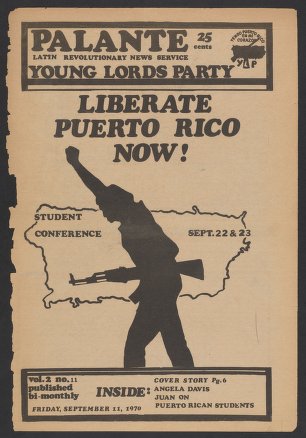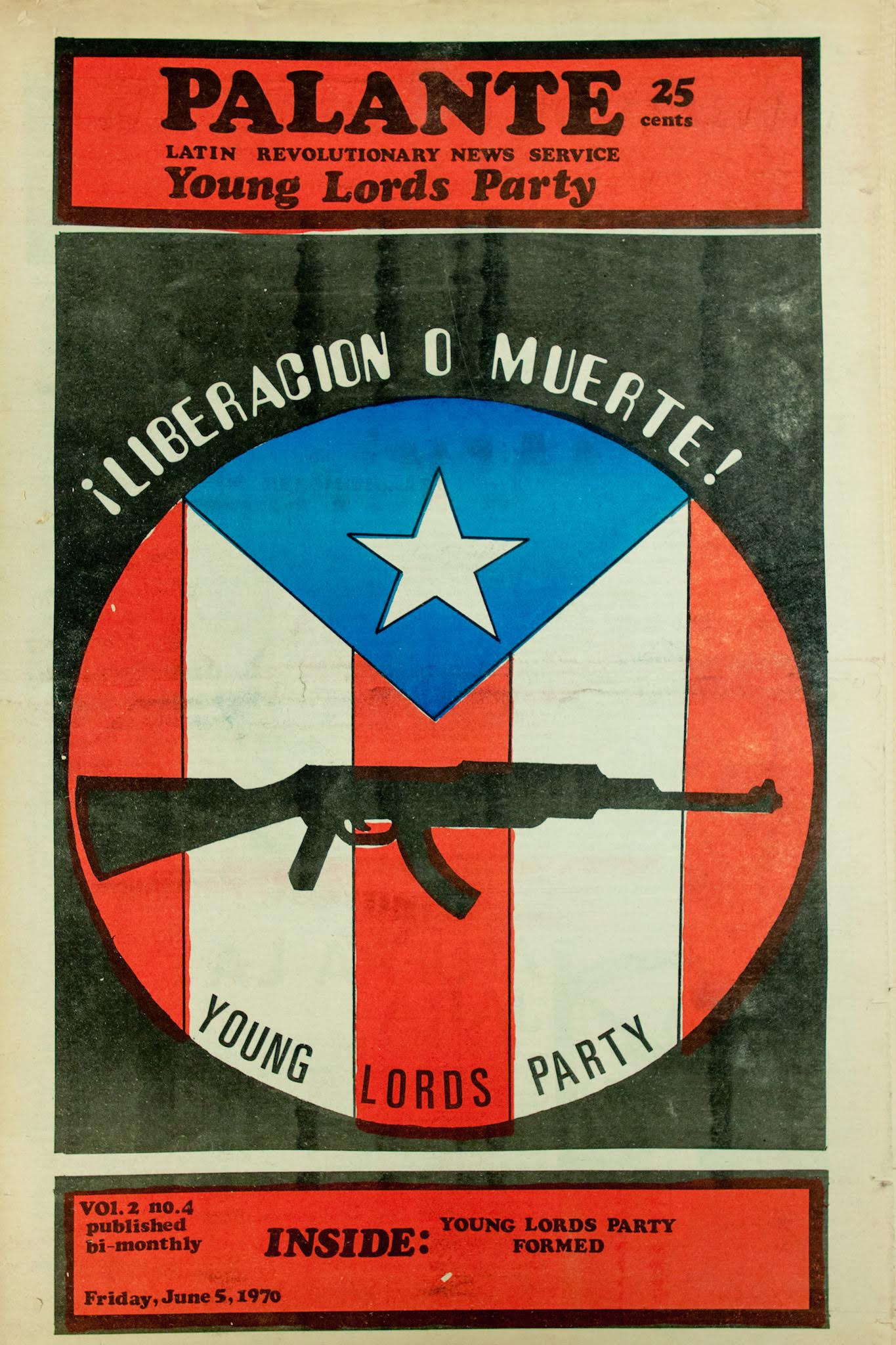
Analyzing the photo: Analysis
Facial Expressions and Emotions
Neutral to Serious Tones: The women's expressions range from neutral to serious, with no overt smiles or laughter. This aligns with the YLP's revolutionary tone, where photos often conveyed resolve and commitment rather than joy, reflecting the gravity of their struggle against racism, poverty, and gender oppression.
Determination: The direct gaze of the central seated woman and the composed demeanor of the others suggest a shared sense of purpose. Their expressions imply they are united in a cause, possibly related to the Women's Caucus's fight against internal sexism or broader community advocacy.
Contemplation: The downward glances of the standing women on the right might indicate reflection or a moment of pause, perhaps acknowledging the challenges they faced within and outside the organizatio.

Timeline and Background
After World War II, large numbers of Puerto Ricans migrated to the U.S. mainland, settling in neighborhoods like Lincoln Park in Chicago and East Harlem in New York City. These communities, known as barrios, quickly became home to vibrant Puerto Rican cultures—but they were also marked by poverty, racial discrimination, police violence, lack of access to quality education, jobs, and healthcare, and later, gentrification. In response to these conditions, in 1968, José "Cha-Cha" Jiménez transformed a Chicago-based Puerto Rican street gang into a political and community organization called the Young Lords Organization (YLO). Inspired by the Black Panther Party, the YLO redirected its energy from street violence to community activism, advocating for healthcare, housing, education, and jobs for marginalized communities. As the movement grew, it spread to other cities. In New York City, college students formed a chapter and renamed it the Young Lords Party (YLP). This version of the group had a more radical and explicitly political platform.

About the Young Lords Party (YLP)
The Young Lords Party was a revolutionary Puerto Rican activist group that emphasized self-determination, social justice, and community empowerment—not just for Puerto Ricans, but for all oppressed peoples. The group was known for being diverse and inclusive, welcoming African Americans, Latinos, women, and LGBTQ members. They saw themselves as "revolutionary nationalists," fighting against systemic oppression and advocating for Puerto Rican independence. The YLP believed their struggle in the U.S. mainland was connected to the broader anti-colonial and anti-imperialist fight across the world.
The 13-Point Program and Platform
In 1969, the YLP drafted their 13-Point Program and Platform, which they published in their newspaper Palante in 1970. This document was modeled after the Black Panther Party's 10-Point Program and served as a mission statement outlining the YLP's revolutionary ideology.
Significance of the 13 Points
Blueprint for Liberation: The 13 points laid out the group's political vision for the liberation of Puerto Ricans—both in Puerto Rico and in the United States. Point 1 called for: "Self-determination for Puerto Ricans—Liberation of the Island and inside the United States."Solidarity Across Struggles: Point 2 called for "Self-determination for all Latinos."Point 3 called for "Liberation of all Third World people."
These points highlighted the YLP's alignment with global struggles against colonialism, racism, and imperialism. Fighting for Equality: The platform emphasized community control, women's liberation, anti-police brutality,and free healthcare, asserting that oppressed voices must be heard and empowered through direct action and grassroots organizing.
Palante was the official bilingual newspaper of the Young Lords Party, published between 1970 and 1976. It served as a key platform for the group to share its political messages, community updates, and revolutionary goals with both English- and Spanish-speaking readers. The newspaper likely included the image in question, which was probably taken by someone involved in its production.
Possible contributors include Hiram Maristany, the Young Lords' official photographer, or Pablo "Yoruba" Guzmán, who was a writer and editor for Palante. However, without a photo credit or additional information, the exact photographer remains unknown.
The Young Lords began as the New York chapter of the Young Lords Organization (YLO) in July 1969. After a split from the original Chicago group, they rebranded themselves as the Young Lords Party (YLP) in May 1970, the same year Palante became their primary publication.
Images during this time period








